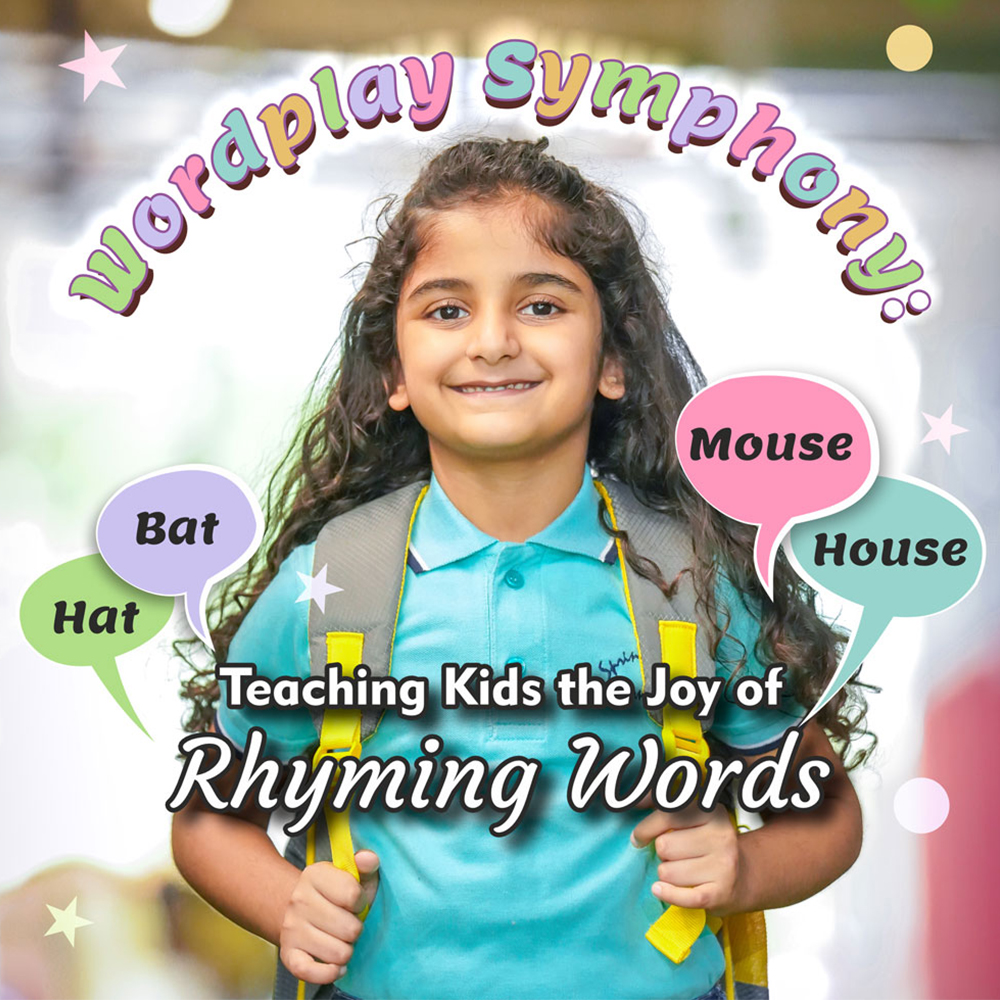Wordplay Symphony: Teaching Kids the Joy of Rhyming Words
Often times we might confuse several words that have similar letters or somehow share similar sounds. With the similarities between the words, a kid might find it difficult to differentiate what each word means and why exactly they are different. It is precisely why rhyming words are given immense importance in preschool and kindergarten.

However, the fact that we need to pay more attention to rhyming words doesn’t make it a very tiring exercise for the children. Since they rhyme, there is a song-like feel to it which makes the learning process fun and joyful.
In the best play schools near me, teaching rhyming words will definitely be a crucial part of learning. If you are wondering why it is necessary to teach rhyming words as a part of nursery class activities and how to make it super fun, here is a perfect blog for you.
Why are rhyming words important in preschool activities?
Lessons of rhyming words have become a mandatory learning routine in preschool. Reading habit and skills are something we will be using our entire life. The practice of rhyming words and the ability to differentiate them will go a long way in honing your reading skills. Here are some of the reasons why rhyming words are important in preschool learning.
- • Forms the basics for spelling right
- • Lays the groundwork for written knowledge and language
- • Improves the oral skills
- • Develops your reading habit
- • The rhyme makes learning so much fun
Since it makes learning fun, you also help children develop a passion towards learning new things and create a positive attitude towards the whole educational pattern.
Phonemic Awareness
Children learn the difference in each sound, understand the letter of the sound and also manage to identify with the parts of the words. A kid may at first think rat and cat are the same. But the rhyming words practice helps them understand how at is the same, but ‘r’ and ‘c’ offer different sounds. In this process of creating phonemic awareness, you first learn the words and how the rhyming words have different sounds and meaning. As they progress, they can create their own rhymes.
Ways to help kids ideantiy rhymes
Listen - You can read the words separately to the kids to help them identify the different sounds. You can gradually start reading books as well. It is the first step where they get an exposure to rhyming sounds and words. You can stress on the words and help the kids realise how they sound similar yet mean different things. This exposure will help them understand the concept of rhyming words.
Listen and react - As you read, you must make it a more interactive practice and ask them to raise the hand whenever they hear rhyming words. You can ask them to point out the rhyming words after reading for some time.
Create - Once you help them listen and read the rhyming and words, and they begin to find them, it’s time you encourage them to produce words that rhyme. It doesn’t necessarily mean the words should make proper sense. You can encourage them to simply come up with as many words as they want, even if they get it wrong.
Songs - The final and the best step that makes learning rhyming words more joyful is reciting rhymes in a song. As we use a rhythm and put rhyming words together, you can create a wonderful song. Add to it a short story, and the kids will love and learn with the flow. To make things more interesting, you can ask them to clap, jump, raise the hands and more to create a whole interactive space.



